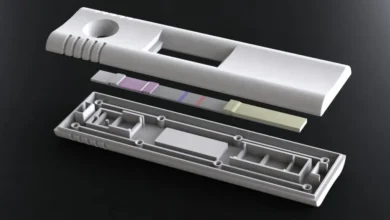What Is Pxless?

“Pxless” is a term combining px (short for pixel) + less, meaning “less reliance on fixed pixels.” In digital design and development, it refers to approaches where layouts, typography, spacing, and UI elements are not rigidly tied to fixed pixel values. Instead, designs are made to adapt fluidly using relative units (like em, rem, %, viewport width/height), responsive grids, and fluid typography.
- It’s not about eliminating pixels entirely — pixels remain central to screens — but about moving away from designing only for specific pixel sizes.
- It emphasizes flexibility, scalability, and device-agnostic designs.
- Pxless is especially relevant with the proliferation of devices (phones, tablets, foldables, large monitors, TVs), where screen sizes and pixel densities vary widely.
Why Pxless Matters Today
1. Device Diversity
There are thousands of device types in use: smartphones with different resolutions and aspect ratios, tablets, laptops, desktops, smartwatches, foldable devices, etc. Designs locked to fixed pixels often break, misalign, or become unreadable on many of these. Pxless approaches ensure a consistent experience regardless of device.
2. User Accessibility
Many users have vision issues, or prefer larger text, or need to zoom. If your layout is tied to strict pixel dimensions, zooming or scaling often leads to layout breakage. Pxless allows designs to scale gracefully, maintain readability, spacing and usability.
3. Performance & Load Efficiency
Rigid pixel-based layouts often require many breakpoints, custom CSS overrides, or images sized for multiple resolutions. That increases maintenance and resource load. Pxless designs using fluid layouts, responsive images, and fewer hard-coded fixed sizes can reduce overhead, speed up page rendering, and make better use of available resources.
4. SEO & Mobile-First Imperative
Google and other search engines favor mobile-friendly, responsive websites. If your site is not responsive or if it breaks on mobile devices, rankings can suffer. Pxless aligns well with mobile-first design, helping with search visibility.
5. Future-Proofing
New devices with new form factors (foldables, AR/VR displays, even flexible screens) are coming. A design system grounded in pxless thinking is more adaptable to change — less likely to need full redesign every time a new device type appears.
How Pxless Works in Practice
To make pxless design real, developers and designers use certain techniques and tools. Below are core practices:
| Strategy | What It Means | Example |
|---|---|---|
| Relative units | Use units like em, rem, %, vw, vh instead of fixed px |
Instead of font-size: 16px, use font-size: 1rem or 2vw depending on layout |
| Fluid grids & flexible containers | Layouts that adapt to the container or viewport size | CSS Grid/Flexbox with fraction units (fr), or setting widths in % rather than fixed px |
| Responsive images & media | Images/video that resize or adapt to density and container | Using max-width: 100%, srcset, or responsive picture tags |
| Viewport-based typography / clamp() | Use viewport measures or CSS clamp() to scale text between min-max values as viewport changes |
E.g., font-size: clamp(1rem, 2vw + 0.5rem, 2.5rem) |
| Design systems & tokens | Define sizes, spacing, typography as tokens or variables that are relative, so change in one place influences whole UI | E.g., spacing tokens in rem, theming variables, etc. |
Also, designers often follow mobile-first strategy: design for small screens first (with flexible units), then scale up, instead of starting with desktop and trying to adapt down.
Pxless vs Traditional Pixel-Perfect Design: Pros & Cons
Pros of Pxless
- Adaptability: Elements adjust to screen changes without breakage.
- Consistency: More coherent user experience across devices.
- Maintainability: Less tweaking for many breakpoints or devices.
- Accessibility: Better support for zooming, high-DPI screens, different user settings.
- Faster iteration: If your typography tokens or layout variables are relative, changes ripple easily.
Cons / Challenges
- Learning curve: Many designers/developers are used to thinking in fixed pixels. Changing mindset takes time.
- Less absolute control: Sometimes you do want precise control (e.g. exact alignment, branding requirements). Pxless needs balancing.
- Browser / device inconsistencies: Some older browsers or devices may have quirks in how they render relative units or viewport units.
- Over-scaling risks: Without good limits, text or UI elements could become too large or too small on extreme screens.
When Traditional Pixel-Perfect Still Makes Sense
- High-precision branding or visual identity where pixel alignment is critical (e.g. logos).
- Static media or print design where exact pixel dimensions matter.
- Some legacy systems or environments where relative units are poorly supported.
Tools, Frameworks & Design Practices Supporting Pxless
Here are tools and practices that enable or simplify pxless design:
- CSS Frameworks: Tailwind CSS (utility-first), Bootstrap (responsive grid), Material UI. They often provide responsive utilities, classes for relative units, etc.
- Design Tools: Figma, Sketch, Adobe XD allow you to define scalable components, responsive constraints, auto layouts, etc.
- CSS Features: Flexbox, CSS Grid,
clamp(),min(),max(), viewport units (vw,vh), CSS custom properties (variables) to define scale. - Responsive Design Patterns: Mobile-first, progressive enhancement, fluid typography, responsive spacing, media queries.
- Design Systems: Creating tokens or variables for typography, spacing, colors, breakpoints — and using them consistently ensures scalability.
Practical practice: test your designs across multiple real devices or emulators early and often. Use tools like browser dev tools, responsive design preview, etc.
Practical Tips to Transition to Pxless in Your Projects
If you or your team want to adopt pxless, here are actionable steps:
Audit your current UI/CSS: Find where fixed px units are heavily used (fonts, margins, widths). Identify components that break on smaller/em larger screens.
Define design tokens/variables: Establish base font size, spacing scales, breakpoints, etc. Use variables (CSS vars, or in preprocessor like Sass/Less) so if you change one, things adjust globally.
Adopt relative units: Replace many px usages with rem, em, %, vw, vh. For typography, set a root base font size and use rems so text scales.
Use fluid or modular scales: For example, typography scales where headings/text sizes adapt smoothly rather than jumping between fixed sizes.
Mobile-first mindset: Design and build starting from small screens, then enhance for larger ones. Ensures that constraints are handled gracefully early.
Limit extremes: Use min/max values with clamp() to ensure things don’t get absurdly large or unreadably small.
Use modern CSS layout systems: Flexbox, Grid enable fluid layouts more easily than older float- or positioning-based layouts.
Test widely: Emulators, real devices, browsers. Responsive design is more than just width: think about orientation, density, zoom, accessibility settings.
The Future of Pxless & Digital Design
Looking ahead, pxless is likely to become a more fundamental standard in design/dev workflows.
- Device form factors are diversifying: foldables, AR/VR, smart displays. Rigid pixel-based designs will struggle.
- AI and automated layout tools may adopt pxless principles, generating adaptive UI rather than designs for fixed viewports.
- Accessibility regulation and standards will push for designs that adapt to user preferences (zoom, fonts, high contrast, etc.), making pxless essential.
- Evolution of CSS and web standards may introduce even more tools to support fluid, reactive, adaptive layouts.
Adopting pxless now is not only about solving current problems — it’s about being ready for what’s next in device diversity, UI/UX expectations, and standards.
Conclusion
In summary, Pxless is a design and development philosophy focused on building flexible, adaptive, scalable digital experiences by moving away from fixed pixel units. With device variety, user accessibility needs, performance pressure, and future form factors, pxless is not just a nice-to-have but becoming a necessity.
While there are challenges (learning curve, some loss of absolute control, browser quirks), the benefits — consistency, maintainability, better UX, responsive design, future-readiness — are strong. If you are designing or developing digital products today or in future, embracing pxless principles in your workflow, tools, and thinking will pay off.
FAQs
Q1: Can pxless affect design aesthetics or branding accuracy?
Yes, it can. Branding sometimes needs precise control (e.g. logo alignment, icon details). But pxless doesn’t mean giving up precision entirely—it means using tools and constraints when needed, while letting layout and typography adapt when flexibility is more important.
Q2: Are there devices or environments where pxless is not feasible?
Older browsers or legacy systems might not support certain CSS units or features fully. Also, extremely constrained environments (e-ink displays, very low screen resolution) may still require some pixel-based adjustments.
Q3: Does pxless make development slower initially?
Often yes — when refactoring existing designs to pxless, or redesigning components. But once your design system or component library is built with relative units etc., future work tends to be faster and more maintainable.
Q4: How does pxless interact with responsive images?
Pixless design complements responsive images: since your layout can shrink and grow, your images must be set to adapt (max-width: 100% etc), possibly via srcset or picture elements to supply different resolution images, so visuals remain sharp and proportional.
Q5: What units are most recommended in a pxless system?
Commonly used units are rem, em, %, vw & vh. Also CSS features like clamp(), min(), max() allow bounding values. Use these relative units so your components scale, but always with sensible minimums/maximums.




